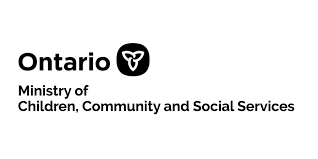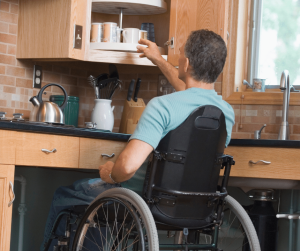Policies
The documents in this virtual manual are maintained by the HPA OHT IPAC Working Group and apply to all HPA OHT member organizations.
The policies provide a standard and evidence-based approach to IPAC practice, resulting in a consistent healthcare experience with a reduced risk of healthcare-associated infections.
These policies are most effective when used in conjunction with organizational procedures that address facility-specific needs.
Education for All Healthcare Workers Policy
IPAC Education for All Healthcare Workers Policy – updated Feb/24 (pdf)
Supporting the adoption and maintenance of safe and effective IPAC practices at healthcare organizations through consistent, ongoing, evidence-based IPAC educations for all healthcare workers.
IPAC Education / Courses
IPAC Core Competencies (LINK)
Public Health Ontario
- Free and online, basic IPAC education recommended for all Healthcare Workers
COVID-19 IPAC Fundamentals Training (LINK)
Public Health Ontario
- Tailored online IPAC education for staff, families, and residents of Congregate Living Organizations.
Post-Graduate IPAC Courses
- Comprehensive, foundational IPAC Courses for individuals most responsible for IPAC at their organization. Note: These courses alone will not provide you with Certification in infection Control
- IPAC Canada (LINK)
- Centennial College (LINK)
- Queen’s University (LINK)
- University of British Columbia (LINK)
- Bay River College (LINK)
IPAC Certification (CIC) (LINK)
Certification Board of Infection Control and Epidemiology
- An internationally recognized designation demonstrating professional competency in infection prevention and control.
- Certification requires a specific professional designation. If you do not meet the requirements to pursue your CIC, consider the Associate – Infection Prevention and Control
Additional Courses
Healthy Workplace Policy – updated Feb/24 (pdf)
Healthcare worker controls, such as immunizations, respiratory etiquette, and staying home when sick, are required to create a safe and healthy environment, and to reduce the risk of transmission of infection.
Healthy Workplace Resources
Recommended Vaccines for Healthcare Workers (LINK)
National Advisory Committee on Immunization (NACI)
Respiratory Etiquette (LINK)
Hand Hygiene Policy – updated Feb/24 (pdf)
To prevent the spread of infection within healthcare facilities by supporting and promoting effective hand hygiene practices by everyone in the environment.
Videos
Just Clean Your Hands (How to Hand Wash and How to Hand Rub) Videos (LINK)
Public Health Ontario
Posters
How to Hand Wash (LINK)
Public Health Ontario
How to Hand Rub (LINK)
Public Health Ontario
Hand Hygiene Audit Tools
Long Term Care Home Observation Tool (LINK)
Hospital Observation Tool (LINK)
Routine Practices and Additional Precautions Policy – updated Feb 2024 (pdf)
Adhering to consistent, safe standards of practice at all times, and implementing extra precautions in high risk situations, will prevent the spread of infection between healthcare workers, patients, clients, and others in the healthcare environment.
Posters
Additional Precautions (Isolation) Signs (LINK)
Public Health Ontario
- Contact, Droplet Contact, Airborne Isolation
Steps for Putting on and Removing PPE (donning and doffing) (LINK)
CDC
- Note: Example 1 is for cloth gowns, Example 2 is for disposable gowns
Recommended Steps: Putting on /Taking off PPE (donning and doffing) (LINK)
Public Health Ontario
Videos
Donning and Doffing PPE (LINK)
Public Health Ontario
Donning and Doffing PPE (LINK)
CDC
Documents
Clinical Syndromes/Conditions with Required Level of Precautions (LINK)
PIDAC
- Use this document to determine isolation precautions based on diagnosis.
Routine Practices and Additional Precautions in All Health Care Settings (LINK)
PIDAC
- Best Practice document
Sharps Safety Policy – updated Feb/24 (pdf)
To protect healthcare workers and others in the healthcare environment from blood-borne infectious diseases by reducing the risk of sharps injuries through safe work practices and the use of safety engineered medical devices.
Sharps Safety Resources
A Planning Guide to the Implementation of Safety Engineered Medical Sharps (LINK)
Public Services Health and Safety (PSHSA)
Ontario Regulation on Needle Safety (LINK)
- Needle Safety, Ontario Reg. 474/07
Exposure to Blood and Body Fluids Policy – updated Feb/24 (pdf)
To provide guidance for the management of potential exposures to blood borne pathogens, such as Hepatitis B (HBV), Hepatitis C (HCV), and Human Immunodeficiency Virus (HIV), for in anyone in the healthcare environment.
Educational Resources
Mandatory Blood Testing Act Application forms:
Blood precautions after exposure (LINK)
HealthLinkBC
Safe Handling of Waste and Linen Policy – updated Feb/24 (pdf)
To protect individuals in the healthcare environment from exposure to infectious pathogens and to prevent transmission of infection through the contact with, and handling of, contaminated waste, linen and other materials.
Waste and Linen Handling Resources
Transport of Dangerous Goods (TDG) Overview (LINK)
Canadian Centre for Occupational Health and Safety (CCOHS)
Best Practices for Environmental Cleaning (LINK)
PIDAC
Cleaning and Disinfection Policy – updated Feb/24 (pdf)
To create a safe and healthy environment and to reduce the risk of transmission of infection between healthcare workers, clients/patients/residents, family members and others in the healthcare environment through cleaning and disinfection.
Educational Resources
Sample Cleaning Procedures based on Clinical Area (LINK)
PIDAC
Chlorine Dilution Calculator (LINK)
Public Health Ontario
How to Prevent Skin Damage from Cleaning Products (LINK)
Public Health Ontario
Best Practices for Environmental Cleaning (LINK)
PIDAC
Best Practices for Cleaning, Disinfection and Sterilization in All Health Care Settings (LINK)
PIDAC
- Information on high-level disinfection and sterilization of medical equipment
Resources
Videos
Just Clean Your Hands (How to Hand Wash and How to Hand Rub ) Videos (LINK)
Public Health Ontario
Posters
How to Hand Wash (LINK)
Public Health Ontario
How to Hand Rub (LINK)
Public Health Ontario
Hand Hygiene Audit Tools
Long Term Care Home Observation Tool (LINK)
Hospital Observation Tool (LINK)
Documents
Best Practices for Hand Hygiene in All Health Care Settings (LINK)
PIDAC
Just Clean Your Hands Program (LINK)
Public Health Ontario
Protecting Your Hands Fact Sheet for Healthcare Providers (LINK)
Public Health Ontario
Posters
Additional Precautions (Isolation) Signs (LINK)
Public Health Ontario
- Contact, Droplet Contact, Airborne Isolation
Steps for Putting on and Removing PPE (donning and doffing) (LINK)
CDC
- Note: Example 1 is for cloth gowns, Example 2 is for disposable gowns
Recommended Steps: Putting on / Taking off PPE (donning and doffing) (LINK)
Public Health Ontario
Videos
Donning and Doffing PPE (LINK)
Public Health Ontario
Donning and Doffing PPE (LINK)
CDC
Documents
Clinical Syndromes/Conditions with Required Level of Precautions (LINK)
PIDAC
- Use this document to determine isolation precautions based on diagnosis.
Routine Practices and Additional Precautions in All Health Care Settings (LINK)
PIDAC
Best Practice document.
Sample Cleaning Procedures based on Clinical Area (LINK)
PIDAC
Chlorine Dilution Calculator (LINK)
Public Health Ontario
How to Prevent Skin Damage from Cleaning Products (LINK)
Public Health Ontario
Best Practices for Environmental Cleaning (LINK)
PIDAC
Best Practices for Cleaning, Disinfection and Sterilization in All Health Care Settings (LINK)
PIDAC
- Information on high-level disinfection and sterilization of medical equipment
Forms
Mandatory Blood Testing Act Application forms:
Documents
Blood precautions after exposure (LINK)
HealthLinkBC
A Planning Guide to the Implementation of Safety Engineered Medical Sharps (LINK)
Public Services Health and Safety (PSHSA)
Ontario Regulation on Needle Safety (LINK)
- Needle Safety, Ontario Reg. 474/07.
Courses
IPAC Core Competencies (LINK)
Public Health Ontario
- Free, online, basic IPAC education recommended for all Healthcare Workers
COVID-19 IPAC Fundamentals Training (LINK)
Public Health Ontario
- Tailored online IPAC education for staff, families, and residents of Congregate Living Organizations.
Preventing and Controlling Infections in Non-Acute Care Settings (LINK)
Centennial College
Infection Prevention and Control Routine Practices (LINK)
Georgian College/IPAC Canada
Post-Graduate IPAC Courses
Comprehensive, foundational IPAC Courses for individuals most responsible for IPAC at their organization. Note: These courses alone will not provide you with Certification in Infection Control
- IPAC Canada (LINK)
- Centennial College (LINK)
- Queen’s University (LINK)
- University of British Columbia (LINK)
- Bay River College (LINK)
IPAC Certification (CIC) (LINK)
Certification Board of Infection Control and Epidemiology
- An internationally recognized designation demonstrating professional competency in infection prevention and control.
- Certification requires a specific professional designation. If you do not meet the requirements to pursue your CIC, consider the Associate – Infection Prevention and Control
Coming Soon…
- Primary Care and Midwifery: 4th Thursday of each month @ 9-10am
- Long-Term Care: First Wednesday of the Month @ 10:30am
- Community Living Groups: First Friday of the Month @ 10:00am
- Retirement Homes: Second Wednesday of the Month @ 10:30am
- Long-Term Care IPAC Leads: Third Wednesday of the month @ 10:30am
- Hospital IPAC group: 4th Monday of the month @13:30
- Open Mike: Available to all groups. Check in to support and share across all of Healthcare: 4th Friday of the Month @ 12:00pm
Contact oht@hpaoht.ca to get involved with any of the above CoPs.
Audit Tools
 Clinical Office Practice: Core Elements (LINK)
Clinical Office Practice: Core Elements (LINK)
Public Health Ontario
Monthly Inspection Checklist for Clinical Office Safety (LINK)
Public Health Ontario
Safe Medication Practices (LINK)
Public Health Ontario
Reprocessing of Medical Equipment/Devices (LINK)
Public Health Ontario
Endoscopy (LINK)
Public Health Ontario
COVID-19 IPAC Assessment for Primary Care/Specialty/Walk-in Clinics (LINK)
Public Health Ontario
Audit Toolkit (LINK)
IPAC Canada
- Free for IPAC Canada members only
Infection Prevention and Control Standards (LINK)
Accreditation Canada
- Free for Accreditation Canada members (temporarily free of charge for all)
Auditing PPE Use Health Care Form (LINK)
Public Health Ontario
Audit Form IPAC Elements in Environmental Services, Dietary and Laundry (LINK)






 Antimicrobial Stewardship Essentials Checklist for LTCH (
Antimicrobial Stewardship Essentials Checklist for LTCH ( COVID-19 Preparedness and Prevention Checklist (
COVID-19 Preparedness and Prevention Checklist (